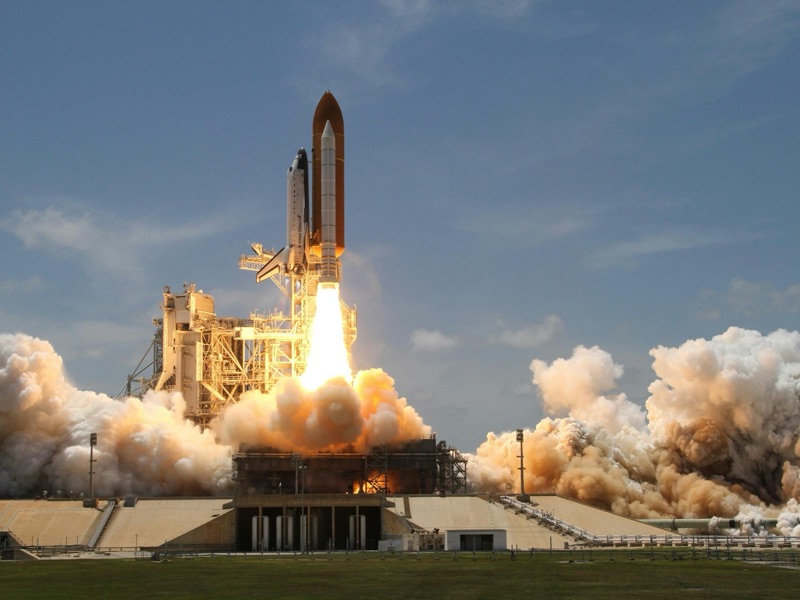The dawn of the space age brought immense technological progress, but it also left a mounting problem in Earth's orbit—space junk. Officially known as "orbital debris," this growing collection of defunct satellites, spent rocket stages, and fragments from past collisions or explosions poses a serious threat to both current and future space missions. As humanity becomes increasingly reliant on space-based infrastructure for communication, navigation, defense, and research, cleaning up Earth's orbital environment has become not just a technical challenge but a critical necessity.

The Scale of the Problem
According to the European Space Agency (ESA), more than 34,000 pieces of debris larger than 10 centimeters are currently tracked in orbit. In addition, there are approximately 1 million objects between 1 and 10 centimeters, and over 130 million objects smaller than 1 centimeter. Even small fragments can be catastrophic due to the high velocities at which objects travel in low Earth orbit (LEO)—up to 28,000 kilometers per hour.
One of the most alarming events in recent years was the 2009 collision between an active Iridium communications satellite and the defunct Russian satellite Cosmos 2251. The impact created thousands of new debris pieces. Similarly, in 2007, a Chinese anti-satellite missile test shattered a weather satellite into more than 3,000 trackable pieces. These events underscore the need for both active debris removal and better debris mitigation strategies.

The Risks of Inaction
Orbital debris increases the risk of collisions with functioning spacecraft, including the International Space Station (ISS), weather and communications satellites, and future missions. The Kessler Syndrome—a theoretical scenario proposed by NASA scientist Donald J. Kessler in 1978—suggests that a cascade of collisions could make low Earth orbit unusable for generations. Preventing this scenario requires proactive cleanup and international cooperation.
Current and Emerging Cleanup Technologies
Numerous space agencies, companies, and research institutions are developing or testing methods to actively remove debris. These technologies range from conceptual to prototyped and some have even been tested in orbit.

1. Harpoons
The concept of using a harpoon to capture space debris has been explored by the European RemoveDEBRIS mission. In 2018, the mission successfully tested a small harpoon that pierced a target plate at close range. The idea is to harpoon larger pieces of debris (like old satellites) and either de-orbit them directly or drag them into a lower orbit for controlled reentry.
2. Nets
Also tested by RemoveDEBRIS, this method involves capturing space junk using a net deployed from a small satellite. Once the net wraps around the object, it is attached to a tether that can be used to de-orbit the debris. This method is ideal for large, slow-moving targets.
3. Robotic Arms and Servicing Vehicles
Several companies and agencies, including Northrop Grumman and the Japanese space agency JAXA, are developing robotic spacecraft equipped with arms that can grab or refuel satellites. Northrop’s Mission Extension Vehicle (MEV) has already successfully docked with aging satellites to extend their lives. Similar technology could be used to capture defunct satellites and either repair or remove them.
4. Tethers and Drag Sails
Electrodynamic tethers can generate a small but continuous force when interacting with Earth’s magnetic field, gradually lowering the orbit of the attached debris until it burns up in the atmosphere. Drag sails, such as those used on the NanoSail-D and TechEdSat missions, increase atmospheric drag to accelerate orbital decay for small satellites at the end of their missions.
5. Lasers and Directed Energy
Some concepts propose using ground-based or space-based lasers to nudge small debris into lower orbits by vaporizing a portion of the surface, generating thrust. While this is still largely theoretical and presents political and technical challenges, the basic physics have been modeled and demonstrated in controlled experiments.
6. Magnetic Capture
For satellites or debris with magnetic materials, systems using superconducting magnets or magnetic grippers have been proposed. These are still in early stages but offer a non-contact method of control, which is especially useful for fragile or tumbling objects.

Policy and Regulation
Technology alone won’t solve the space junk problem. Regulation, policy, and international cooperation are essential. The United Nations Office for Outer Space Affairs (UNOOSA) and the Inter-Agency Space Debris Coordination Committee (IADC) have issued guidelines for space debris mitigation. These include recommendations like deorbiting satellites within 25 years of mission end, minimizing explosion risks, and designing spacecraft to be more debris-resistant.
However, adherence to these guidelines is voluntary, and enforcement mechanisms are limited. As private companies begin to dominate orbital activity, the need for binding international regulations and active tracking becomes more pressing.
Commercial Players and Future Prospects
Private companies are stepping up with innovative solutions:
- ClearSpace SA, a Swiss startup, was selected by ESA to lead the ClearSpace-1 mission, aimed at capturing and deorbiting a single large piece of debris in 2026.
- Astroscale, based in Japan and the UK, is developing technologies for both debris removal and satellite servicing, including docking mechanisms and debris inspection services.
- LeoLabs and Privateer Space are working on better tracking of small debris using radar and AI.
Future cleanup efforts may rely on a combination of these approaches, deployed by autonomous satellites or swarms of coordinated vehicles, potentially using AI for decision-making and adaptive planning.
Challenges Ahead
Despite promising technologies, numerous challenges remain:
- Economic: Who pays for cleanup? Current business models are still emerging.
- Legal: Ownership of debris remains a gray area. Under international law, only the country that launched an object can legally interact with it.
- Technical: Capturing fast-moving, tumbling debris without causing further collisions is extremely complex.
- Coordination: Effective debris removal requires global data sharing, standardization, and operational coordination.
Conclusion
Space junk is not just a nuisance; it's a growing hazard that threatens the sustainability of our space endeavors. The good news is that awareness is rising and viable solutions are emerging. From harpoons and nets to robotic arms and laser nudges, the technological toolkit for orbital cleanup is expanding. What’s needed now is the political will, international cooperation, and funding to turn promising prototypes into an operational defense system for Earth’s orbital highways.
Cleaning up space isn’t just about protecting satellites—it’s about preserving the future of space exploration and ensuring that orbit remains accessible for generations to come.
